This city is like no other in Spain – here’s why it’s such an amazing place to visit during Ramadan
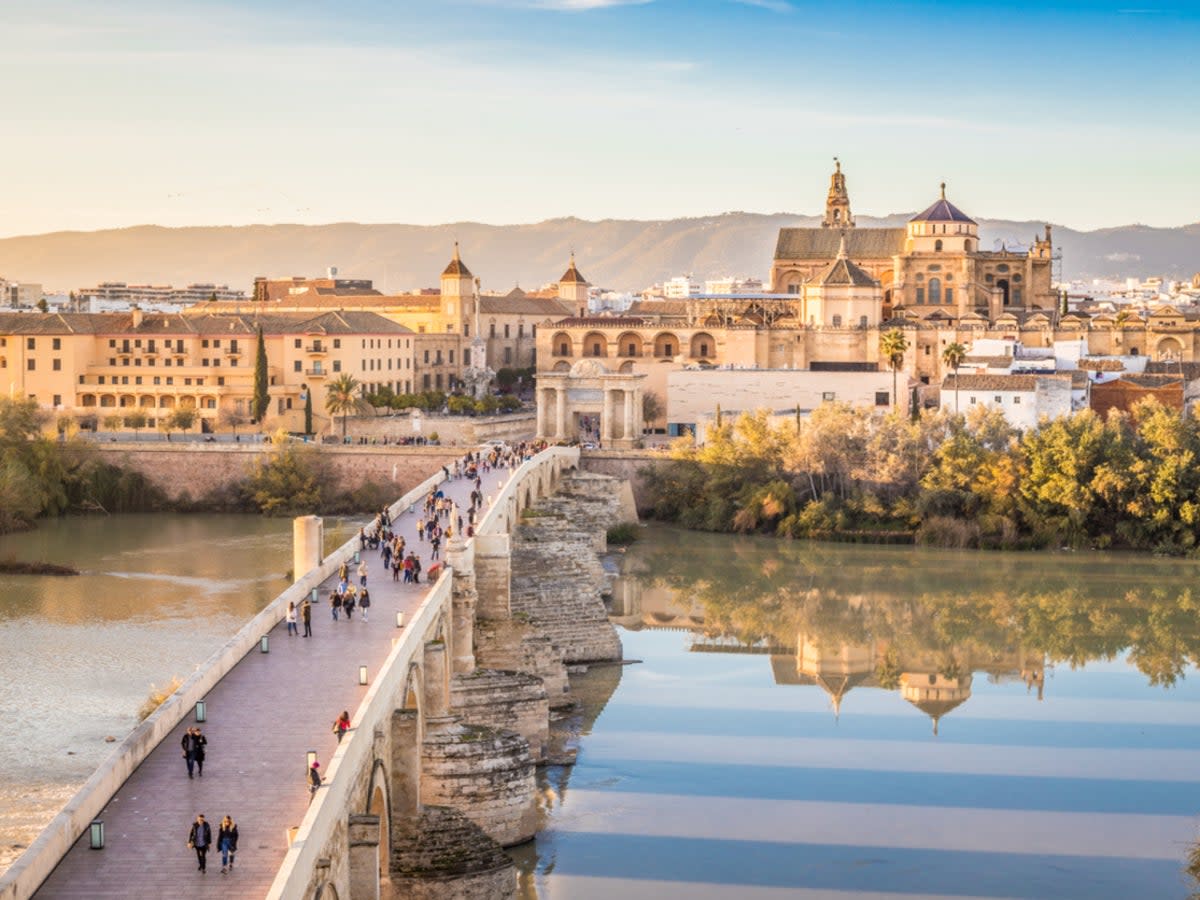
In the buzzing heart of Córdoba, it’s easy to see why the caliphs of Al-Andalus chose the city as the capital of their western European empire in AD 711. The labyrinthine streets – where buildings stand almost like souks and the aroma of shisha smoke drifts from cosy bars – are more reminiscent of the sun-baked medinas of the Middle East than the boulevards of Madrid or Valencia.
These winding pathways whisper tales of Islamic influence that go back more than a millennium, despite many believing that Muslim integration in the West is a relatively recent concept. It is a confronting topic of discussion, one often driven by world events rather than by the real lives of Muslims in Western society.
Islam in Europe isn’t recent at all. In fact, its influence in Córdoba predates many modern European countries as we know them today. Islam observances like Ramadan – the 30-day period of fasting that Muslims across the world observe each year – deserve their place in Europe’s historical canon.
For a month, European Muslims wake before sunrise for suhoor (the pre-dawn meal), fast during daylight hours, then break their fast at iftar (the sunset meal). They come together for spiritual reflection and community activities in mosques across Europe as they do elsewhere in the world. But only Córdoba can reasonably claim to be the birthplace of Ramadan in Europe, the city being the first place it was observed in an organised way.
Just a century after the founding of Islam, an army of Arabs and Berbers left Damascus, traversed North Africa, and crossed the Strait of Gibraltar. Their vision was to create a new caliphate that rivalled the centres of Islamic power across Egypt and the Levant.
Read more on Spain travel:
They chose Córdoba as their capital and over the next 780 years the Islamic nation of Al-Andalus slowly took shape. At its peak, Córdoba was a capital city of more than 300,000 inhabitants and the centre of a caliphate that spanned much of the Iberian Peninsula.
The city is bordered to the north by Spain’s Sierra Morena mountain range, which bisects this part of Andalusia. Modern Córdoba’s buildings – which, by law, must be less than seven stories tall to avoid diminishing its prominent cathedral spires – now stretch along the banks of the Guadalquivir River.
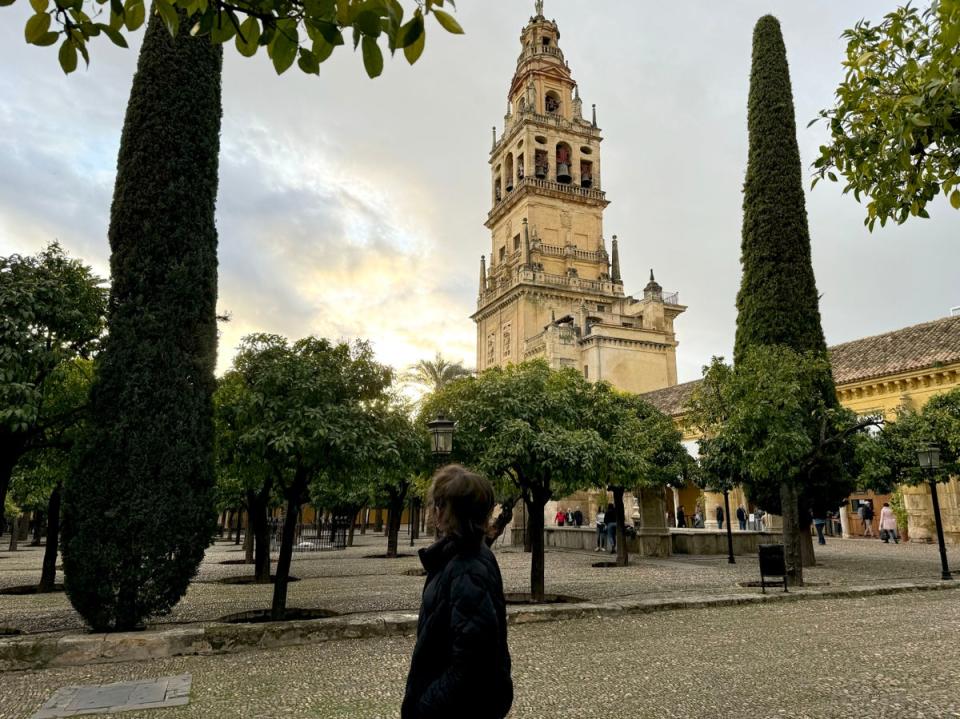
“University students from around the world visit to examine religious history,” my guide, Maria Font Merino said. A proud Córdobes, born and bred, Maria has used her intimate knowledge of the city on tours for nearly three decades.â¯
“Córdoba is the place for Islamic history and theology students,” she went on, as we picked our way through the ruins of the caliphs’ lost palace city of Madinat al-Zahra, also known as Medina Azahara. Its skeleton now sits on a hillside some 8km west of Córdoba’s centre, and is a focal point for Spain’s archaeology community, which is fiercely proud of this relatively recent addition to the Unesco World Heritage list.
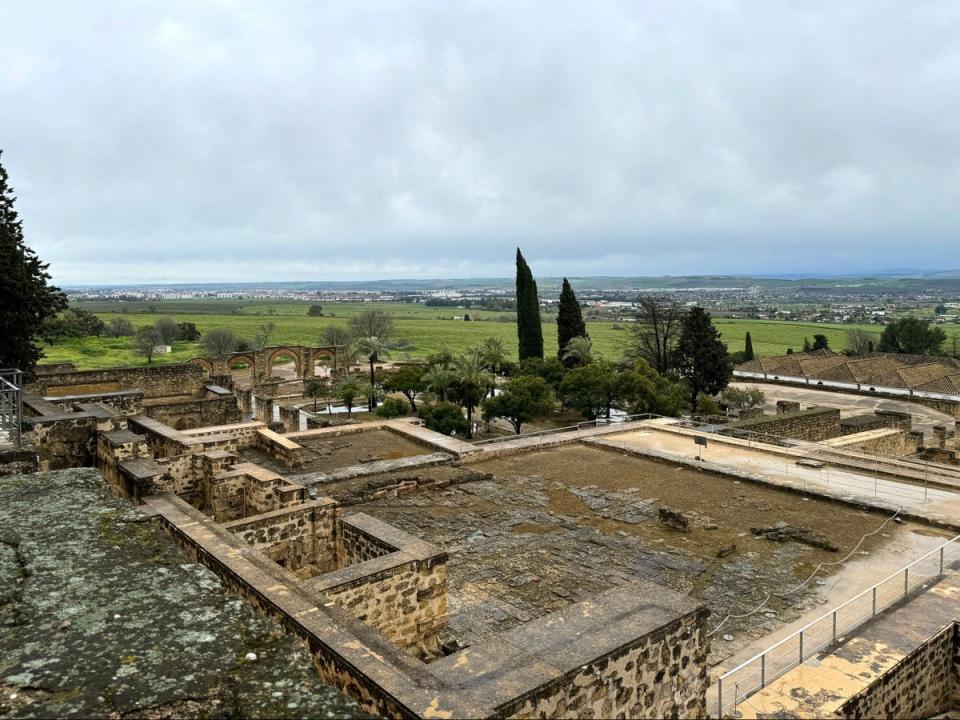
Islam’s expansion led to an explosion in Córdoba’s population and, when the city’s rulers had outgrown it, the construction of Medina Azahara, the so-called “shining city”. Built in the 10th century by Caliph Abd al-Rahman III, it spills down a hillside in three tiers. The caliph’s palace sits atop, and the ruins flow down to Al-Andalus’s once bustling administrative and religious centres. A palpable sense of anticipation remains as more than 90 per cent of the site is yet to be excavated.
Medina Azahara’s splendour waned in AD 1010 when it fell to a Berber revolt. This led to its destruction and the dispersal of treasures which found their way to northern Europe, influencing art and culture there.
The ruins I explored were a world away from Marbella’s sands or Barcelona’s gridded streets. But there was a telltale sign that we were in Spain: the thousands of olive trees. Córdoba – and Andalusia more widely – have the densest concentration of olive groves in the country.
Olive cultivation gained renewed prominence during Moorish rule, with the modern Spanish word for oil – aceite – tracing its etymology from the Arabic word for olive oil, al-zeit.
Later, I returned to my hotel, Parador de Córdoba, which is nestled in the hills 3km northwest of the city centre, in the Arruzafa district and built on the ruins of Abd al-Rahman l’s summer palace.⯠The area is home to what are believed to be Europe's oldest palm trees – legend says they were planted by the caliph Abd al-Rahman I himself. Today the expansive property exudes a mid-century charm that is a welcome contrast to Córdoba’s historic city centre.
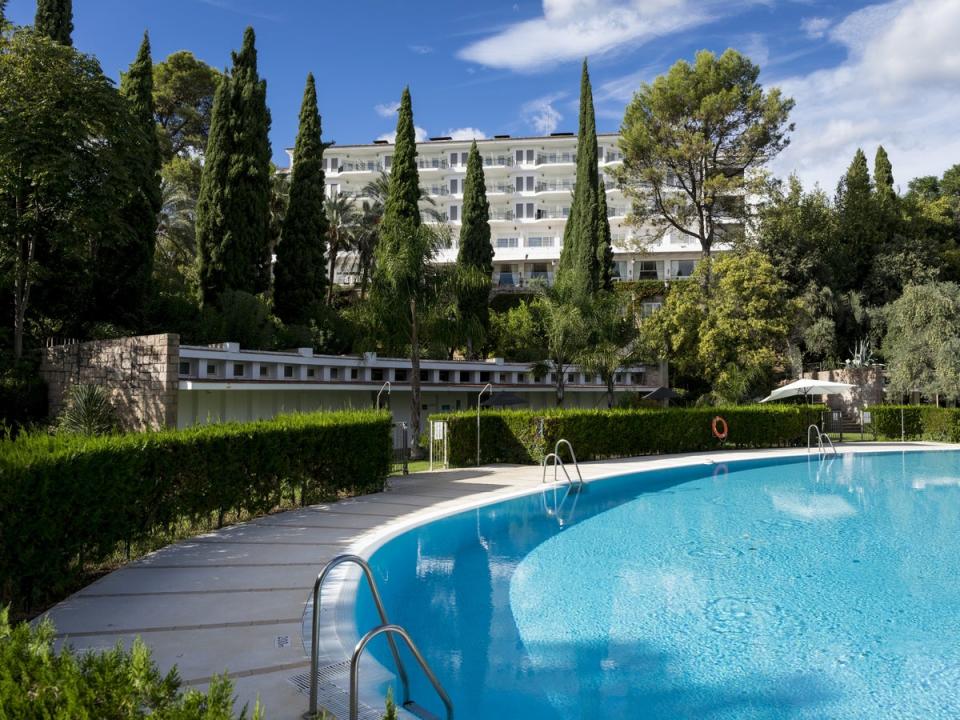
Sunset was fast approaching, which meant finding somewhere to break my fast. I made my way to a vegetarian iftar at Amistad Córdoba, a hotel located across two Moorish mansions within the city’s old Jewish quarter. The area was home to Córdoba’s Jewish population from the 10th to 15th centuries.
The meal, a tasting menu for Córdoban cuisine, reflected both its Moorish roots and contemporary Spanish influences. Dishes like salmorejo, an Andalusian cold tomato soup, echoed Arab cuisine’s tomato rice soup. Roasted vegetables, including honey-soaked aubergine, brought baba ganoush flavours to mind, while a vegetarian-friendly flamenquín resembled a lighter falafel.
The following day, torrential rain prompted me to take a taxi to Córdoba’s remarkable Mezquita. This mosque-cathedral covers 24,000 sq m, dominating the cityscape. The building almost defies description and is as complicated inside as its storied history.
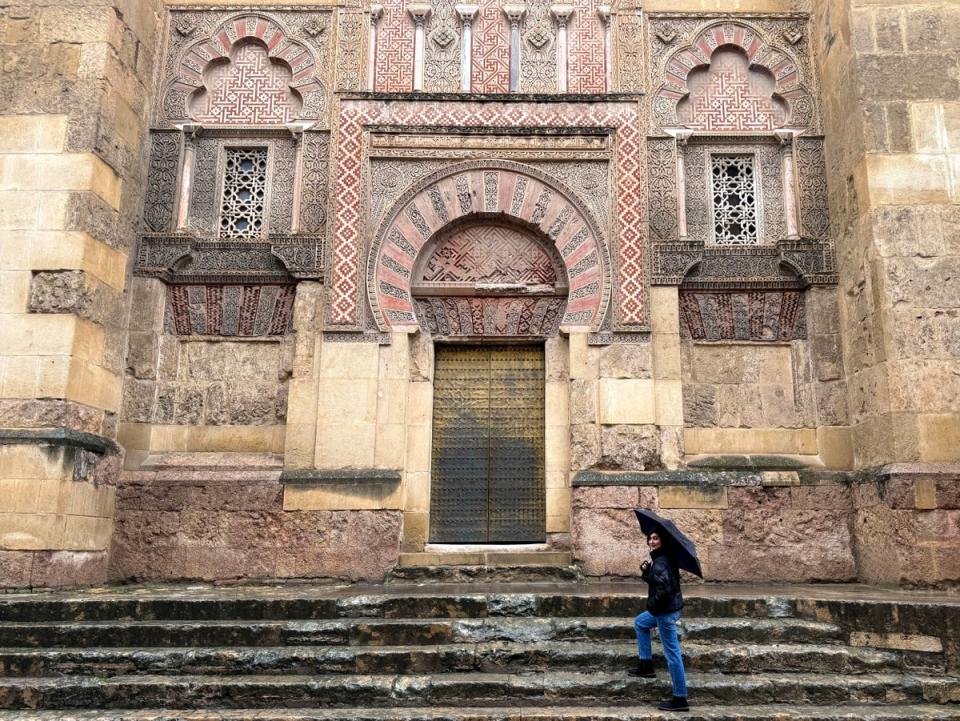
Construction commenced in AD 785, guided by Abd al-Rahman I’s singular vision to create a mosque similar to those in Damascus and Baghdad. After the fall of Al-Andalus and the Spanish Reconquista in AD 1236, Christians repurposed the mosque, adding an altar beneath its skylight and a bell to its minaret.â¯
What is left today typifies the Córdoban experience: a physical melding of two cultures and religions that feels all-at-once comfortable and uncomfortable; two different buildings occupying the same space at the same time.
An astonishing 856 pillars of marble and jasper – some of which were repurposed from the Roman and early Christian ruins on the same site – stretch in rows familiar to visitors of historic mosques. But the Mezquita is different: at the structure’s centre, almost like a transplanted organ, is the cathedral, with its intricate marble statues of saints and prominent Catholic figures. Completed over more than two centuries and built in at least four architectural styles, the cathedral sits just metres away from the mosque’s former mihrab, which historically signalled the direction of prayer for the city’s Muslims.
Today, the Mezquita is a complex flashpoint in Spanish society. As a working cathedral, Muslims are not allowed to pray inside the most mosque-like parts of the structure, a decision that has long garnered protests from them (and even spurred isolated clashes between the two faiths).â¯
As heavy rain continued to fall, I exited the Mezquita and hurried towards the mostly Moorish-reconstructed Roman bridge housing the Calahorra Tower. The building now has a small museum dedicated to life in Al-Andalus.â¯
A man selling shawarmas from a cart waved from across the street, gesturing towards the menu. “Ven a comer shawarma!” he shouted. I managed to convey, in my broken Spanish, the fact that I was fasting. He paused, then nodded an appreciative “Alhamdulillah”.
In that moment, Córdoba beautifully captured for me the deep-rooted history of Islam and Ramadan in Europe, and proved itself a remarkable destination in which to explore the religion's influences beyond the Middle East.
Travel essentials
Maria Font Merino is a licensed tour guide with over 25 years of experience. She offers private tours in Cordoba on ToursByLocals.
Getting there
Flights to Malaga are available via multiple airlines from all major UK airports. Seville flights are operated by Ryanair, Vueling, British Airways, and EasyJet from London, Birmingham and Manchester. From either city, Córdoba is accessible via an hour-long high-speed train journey, departing every 30–50 minutes.
Where to stay
Parador de Córdoba
Offering stunning views, complete privacy and a rich history, the hotel is conveniently near a bus stop for a 15-minute drive to the city centre.
Puerta de la Luna
A convenient hostel located one kilometre from the city centre.
Read more on the best Spain hotels

 Yahoo News
Yahoo News 
